- Administrator
- Albums and Singles
The first new full-length Godflesh album in 13 years will be released on Justin Broadrick's own Avalanche Recordings label on October 7, 2014.
More information will eventually be posted here.
A new song ("New Dark Ages") can be heard here.

Read More
- Administrator
- Albums and Singles
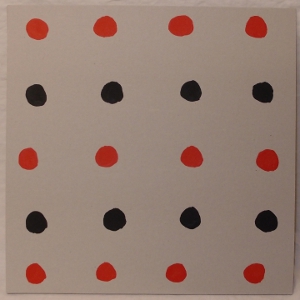
Jason Kahn
Noema
(2014)
Editions 003 Double LP
http://jasonkahn.net/editions
Edition of 250
Heavy weight 180 gram vinyl
Hand-painted covers on thick gray cardboard
Source material recorded July to October 2012 in Kyoto.
Pieces composed January 2013 to March 2014 in Zürich.
Mastering, liner notes and LP artwork Jason Kahn.
- - - - - - - - - - - - - - - - - - - - - - - - - - - - - - - - - - - - - - - - - - - - - - - - - - - - - - - - - -
Noema is a collection of 37 short pieces composed from
source material I recorded in and around Kyoto during a
three-month stay there with my family in 2012.
The over-arching theme of the record is the idea of exploring
social space through everyday sound – and especially in the
case of Kyoto, not just focusing on what we've come to know
the city for (temples, shrines, etc. – though some of these are
in there as well).
The pieces also deal with the idea of memory, much as the
famous "episode of the madeline" in Marcel Proust's Remembrance
of Things Past, in which the taste of the madeline dipped in tea
triggers a flood of involuntary memories. For me, many of the
sounds used in these pieces work the same way.
The word noema is often used in philosophical discourse to describe
the object of thought – and in the case of this record, the sounds
themselves and the structures they contribute to in the
production of social space.
Read More
- Administrator
- Albums and Singles
Beautiful Noise is the first-ever documentary about one of the most influential, underground music movements of the late 20th century.
Featuring members of: Cocteau Twins, The Jesus & Mary Chain, My Bloody Valentine, Ride, Slowdive, Chapterhouse, Swervedriver, Lush, Curve, Pale Saints, Seefeel, and more.
Created by filmmakers Eric Green (Writer/Director) & Sarah Ogletree (Producer/Editor) and their production company HypFilms, Beautiful Noise is a DIY, indie film and passion project inspired by a deep appreciation of the music and the desire to see it documented in musical history.
The genesis of the project began with the principals Green in April of 2005 and Ogletree and evolved over the course of many years and with the help of a great many people who believed in the project and donated their time, equipment, knowledge, and even money to see this film released.
Following a successfull Kickstarter campaign and a protracted licensing phase, the filmmakers were able to complete the film.
Beautiful Noise Premiered May 31, 2014 at the Seattle International Film Festival and Internationally June 8, 2014 at the Sheffield International Film Festival. Currently it continues to screen in festivals and will next be released on Home Video (date to be announced soon).
More information can be found here.

Read More
- Administrator
- Albums and Singles
 There may be some throwback elements on Ars Phoenix's most recent album, but for the most part it makes for great contemporary synth pop. Retaining a darker, and occasionally harsh, edge, the eight songs that comprise it work beyond just their mood, but as memorable, well-written songs as well.
There may be some throwback elements on Ars Phoenix's most recent album, but for the most part it makes for great contemporary synth pop. Retaining a darker, and occasionally harsh, edge, the eight songs that comprise it work beyond just their mood, but as memorable, well-written songs as well.
There is a distinctly bleak, gothic vibe pervading these songs, evident from the opening moments of "Chlorophyll".A rudimentary, stiff rhythm and strong guitar parts lead the song while the duet vocals from Jon Glover and Catlin Ollinger mesh wonderfully with understated keyboard progressions.On "Amethyst" the trio (plus guitarist Paige Fowler) follow a similar template, focusing on guitar and synth flourishes as it builds to a tighter, more forceful conclusion.The goth and synth pop elements are undeniable, but never are they cliché or exploited.
The spirit of the early days of synth pop pervades the album, but thematically "Who Is Watching the Neighborhood Watchmen?" makes for an update of that classic theme of early industrial:paranoia.As Cabaret Voltaire built some of their legendary albums on the consequences of CCTV surveillance, Ars Phoenix updates it to drones and social media with a subtle nod to the Trayvon Martin/George Zimmerman case in its title.
As a whole, Violent Rain is rather slow and laconic, but at times the tempo is knocked a little higher, contrasting the more depressive moments.Ars Phoenix snaps along with a punky thrash on "Elegant Vapor," with noisier synths and a strong, memorable melody."WHTY?" is another uptempo one, with its stiff drum machine, noisy saw tooth keyboards and lots of random noises that still manages to build into a catchy chorus.
Locrian member Terence Hannum adds a bit of overdriven guitar to "Shudder at the Sound," and its oddly paired distorted drum machine and electronic noises, making its dirge a bit more varied than it could be.The most drastic departure is on the closing title song, the lengthiest on here.Depressive sawtooth synths and clattering rhythms set the stage; with the focus being spoken word narrative of Ollinger.The sound is more diverse here, with a brilliant death rock guitar heavy conclusion, although I feel the vocals are emphasized just a bit too much throughout.
Unlike many in the industrial/synth pop revivalist movement, Ars Phoenix makes no attempt to sound like they are tied specifically to the early 1980s.Their use of drum machines and synths might be in line with those days, but their overall approach is far more contemporary.It balances the familiar and fresh expertly, and results for some extremely catchy songs, the type of record that draws me in over and over again.
samples:
 
Read More
- Administrator
- Albums and Singles
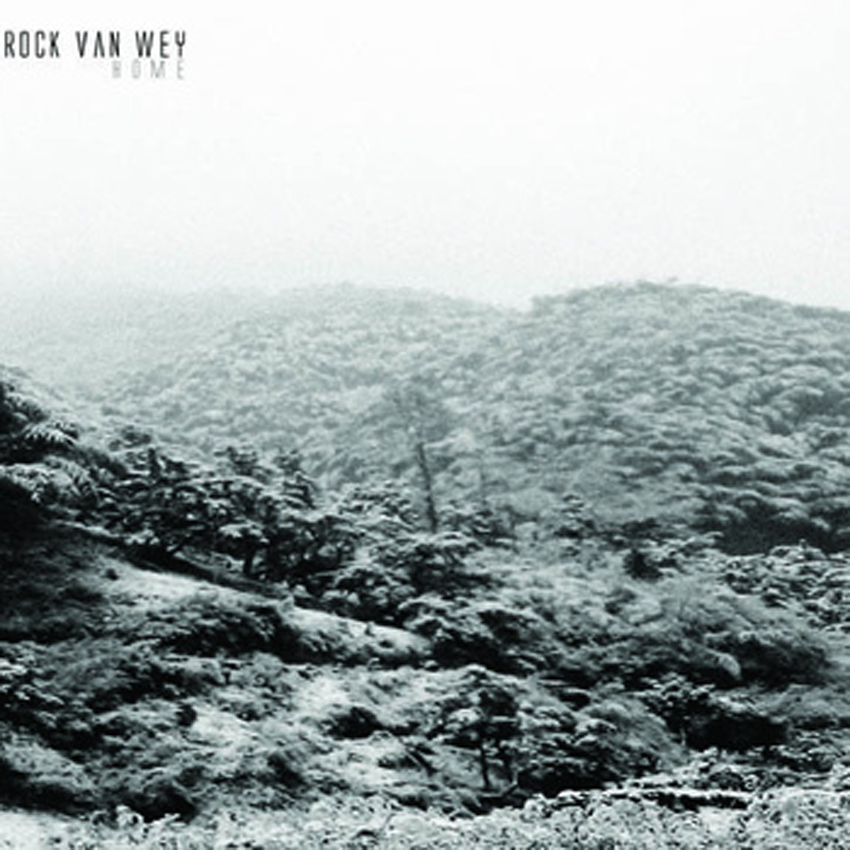 Five years ago, this San Francisco DJ/producer released quite a massive, remarkable, and distinctive ambient epic called White Clouds Drift On and On, his first album under his own name.  Home is its follow-up and I have no idea quite what to make of it.  In some ways, it surpasses its wonderful predecessor in its lush, melancholy grandeur.  In other ways, however, its extreme length (almost 3 hours) coupled with its narrow, unwavering aesthetic serve to exaggerate its charms to the point of caricature or folly.  There are still some wonderful songs here, of course, but too much of a good thing yields rapidly diminishing returns.
Five years ago, this San Francisco DJ/producer released quite a massive, remarkable, and distinctive ambient epic called White Clouds Drift On and On, his first album under his own name.  Home is its follow-up and I have no idea quite what to make of it.  In some ways, it surpasses its wonderful predecessor in its lush, melancholy grandeur.  In other ways, however, its extreme length (almost 3 hours) coupled with its narrow, unwavering aesthetic serve to exaggerate its charms to the point of caricature or folly.  There are still some wonderful songs here, of course, but too much of a good thing yields rapidly diminishing returns.
I seem to be covering a lot of albums lately that can be completely summarized in just one sentence, a trend which Home does not disrupt at all.  In this case, that sentence is "billowing and warmly hissing swells of oceanic bliss."  There are a couple of things that set Von Wey apart from artists treading similar territory though.  The main one is probably scale, as Brock's "ambient" works sound absolutely symphonic in their complexity (and in their length).  If I wanted to be unfairly reductive, I would say that most of Home sounds like one of the more beautiful instrumental passages from The Cure’s Disintegration layered and expanded into near-infinity, as it certainly has a similar narcotic feel and Romantic sadness.  In reality, however, these pieces are far from unchanging loops–they just evolve from movement to movement so slowly as to be near-imperceptible.
The other trait that sets Brock apart from other ambient artists in this vein is that he is coming from a techno background rather than a drone one.  That manifests itself most obviously in the ghostly loops of soulful vocal hooks that pervade the album, but also results in an occasional bass thump or dub-like flourish.  Those elements are most effective in "Empty Houses Seen From Above" and "A Heart of Darkness," particularly the latter, which makes excellent use of obsessively looping female vocal snippets.  The overall effect is quite an unusual one in Van Wey's hands, as he seems to be operating on a completely different timescale than other humans (for better or worse).  The best summation I can provide is this: Holy Other sounds like sexy R&B blurred and slowed into a drugged haze-–Home sounds like Holy Other sucked into a black hole and spat out the other side in an almost unrecognizably stretched and slowed form.
While that is admittedly a very cool and inventive feat, I have a few issues that prevent me from quite falling in love with this album, most of which are highly subjective.  For one, its predecessor was more unusual, as it incorporated chopped-up and digitally mangled snatches of non-English vocals that favorably recalled Peter Christopherson's The Threshold Houseboys Choir.  I liked that.  Of course, switching to exclusively using more conventional soul/dance vocal snippets is probably more "honest," given Brock's background, so I will give him a pass on that.  Another issue is that listening to Home feels uncomfortable voyeuristic, like I am eavesdropping on another man's cathartic tour de force of sadness, though that would not have bothered me as much in my younger years (in fact, I probably would have loved it).  Finally, Home is just absolutely monolithic in its aesthetic and scope, which is a double-edged sword: for me, a casual fan, this is simply way too much of the same thing.  For someone more unambiguously enthusiastic about Brock's vision, however, this is probably an absolute godsend (it certainly sounds like he spent several years crafting it).  In any case, Home certainly feels like a hugely impressive achievement, albeit quite a highly personal, obsessive, and narrowly focused one.
 
Read More
- Administrator
- Albums and Singles
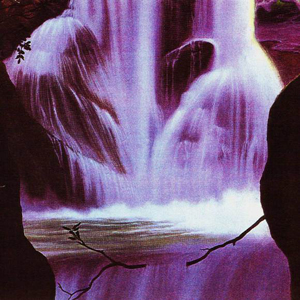 Recorded between California, Texas, and England, Qui Mal y Pense reissues one of Smokey Emery's (Daniel Hipólito) most complex and nuanced works, and the third in his Soundtracks for Invisibility series. Created entirely from hand manipulated open reel tapes, it is a lush, dramatic series of compositions that would work very well as a true soundtrack, but are just fine as stand alone music.
Recorded between California, Texas, and England, Qui Mal y Pense reissues one of Smokey Emery's (Daniel Hipólito) most complex and nuanced works, and the third in his Soundtracks for Invisibility series. Created entirely from hand manipulated open reel tapes, it is a lush, dramatic series of compositions that would work very well as a true soundtrack, but are just fine as stand alone music.
The brief introductory "01" is all sci-fi noises and echoes over a soft ambient passage, but the remainder of the album embraces the latter more than the former, which was a smart decision, as the pseudo '60s electronic sound is overused to say the least.The nearly 31 minute "05" also heavily emphasizes ambient spaciousness, mixing sustained electronics and a buried, ragged melody.It is not all that dynamic, but expands, dense and menacing, with only the most fragmented of melodies slipping out.
Even though this release was constructed mostly from processed magnetic tape, it sounds as if traditional instruments manage to slip through from the original source material, such as the simple guitar melodies on "Afore."Bathed in reverb, Hipólito builds walls of reverb around the guitar, slipping into ugly noise in its closing minutes.A guitar (or sound-alike instrument) also appears on "The Room Falls Away" with tremolo heavy electronic expanses.It is comparatively simple in its construction, but no less captivating.
What sounds like mangled, bowed strings contrast a dour melody on "04," the dissonant and melodic pair conveying sadness on the first half, and then foreboding menace on the second.The paring of the two extremes also helps to define "02," with drifting bassy electronics mixed with spiny, acidic bits of noise to offset them, resulting in a piece of creaking moodiness and heavy reverb.
Even though it was constructed with such a basic strategy, Daniel Hipólito extracts a world of sounds and atmospheres out of those old spools of magnetic tape.What could just be a mundane collection of loops is instead a cinematic expanse of sound, mysterious and oblique in its abstraction.The final product though, befittingly presented on cassette tape, carries just the right amount of mystery to unravel in its gauzy layers.
samples:
 
Read More
- Administrator
- Albums and Singles
Elden M.'s electro-industrial Avellan Cross project was not only responsible for a few excellent tapes as of late, but also heralded the return of his legendary Allegory Chapel Ltd. guise. Founded in the mid 1980s and largely going silent a decade later, ACL has lost none of its distinctive, esoteric sound or mood during that hiatus, and still stands out as a singular entity in the world of noise.
ACL was one of the few noise projects in the United States that never succumbed to shock tactics or obnoxious violent imagery in order to convey a sense of extremity. Even the occasional appearance of Satanic symbolism and titles felt more like an esoteric examination rather than an offshoot of juvenile thrash/death metal. Extremity was never ACL's goal anyway, which carries over into the sound as well. The work was never about being as loud or as harsh as possible: it is about the pure examination of sound.
On a piece such as "Nazca Wormhole," he works rumbling low end with sheets of white noise, constantly shifting the two layers like tectonic plates, getting close to harsh noise territory without ever going all the way. With brittle synth melodies and low bit rate samples added in, it is a perfect example of masterful subtlety in a style that is defined by anything but. "Colony Collapse Disorder" is a similar example, where he mixes bass drones and churning, looped noise with jet engine roars. It is the ACL sense of careful composition that keeps far more compelling than most noise artists ever manage to.
The second half of the tape is a bit more experimental and sees Elden M. working with different styles without losing his uniqueness. "Lone Wolf Jihad" opens with news samples and rhythmic, wobbling noises in a manner that reminded me of Grey Wolves or Con-Dom in its power electronics style, but far cleaner and better structured than those two projects ever have been. Hypnotic and meditative, "Creeping Marrow" is more sound collage in nature, layering together disparate layers that work together perfectly. The whole piece lurches appropriately given its name, and is a bit indebted to Throbbing Gristle's early work (as alluded to in its title).
The noise scene has been a massive state of flux since the last time Elden M. released material as Allegory Chapel Ltd., but now, just as then, his work stands out distinctively. It is obviously a part of the genre, but Resurrection stands alone, embodying the best of noise while ignoring its shortfalls. Hypnotic and captivating without being harsh or cliché, it is another high water mark in his impressive catalog.
samples:
Read More
- Administrator
- Albums and Singles
 In some ways, Gog’s new LP comes across as a rebirth of the project that keeps the best elements of Michael Bjella's work while pushing boundaries and expectations. The bleak, moody guitar noise is still there, culled from the best bits of metal and drone, but Gog manages to go further and make music that is challenging, but still memorable as songs, rather than just compositions.
In some ways, Gog’s new LP comes across as a rebirth of the project that keeps the best elements of Michael Bjella's work while pushing boundaries and expectations. The bleak, moody guitar noise is still there, culled from the best bits of metal and drone, but Gog manages to go further and make music that is challenging, but still memorable as songs, rather than just compositions.
The most striking change for me was right on the surface:the cover art.While previous releases have stuck to a dark gray/black palette and more traditionally metal imagery such as skulls and the like, Gog is bright red and stark.Paired with the bold, block yellow lettering on the back, I was reminded of vintage communist propaganda posters, which surely is no accident.
This does not carry over to the music, however, with these five songs not diverging drastically from previous Gog albums, but having an additional layer of complexity and polish.Bjella channels this on "The Lies, They Want to Give You Something," by pairing deep, pounding bass with depressive piano.His penchant for excellent guitar noise is omnipresent and slips in nicely, miraculously drifting into a melodic squall toward the end.
The piano also features prominently on "First Night After Death," within a subtle expanse of ambience and a dull, building guitar roar.With drums provided by Josh Bodnar, it comes together in a bombastic, powerful conclusion that closes the album chillingly well."The First Cure" leads in with the softest moments of the album.Soft electronics and gentle vocals by guest Francesca Marongiu (Agarttha/Architeuthis Rex) set a gentle, haunting stage that are blown away by rapid fire drums and blackened guitar noise, her beautiful voice replaced with Bjella's grindcore growl.
On "Before You Go, We'd Love to Tear You to Fucking Pieces," Bjella is at his most conventional, with grimy, dirgy bass and the pounding drums providing the rhythmic foundation for his droning guitar noise.It might not be as adventurous as some of the other songs here, but it is so well done that it is completely irrelevant.At the other end of the spectrum, "Until the Body Runs Dry" is just a grinding expanse of fuzzy low volume noise.More textural and abstract, it works great as a moody low-key midpoint to the album.
The biggest evolution on this album is Gog's transcending the experimental metal scene and becoming a different, uncategorizable beast.The sound he honed on recent albums is still present, but is fully realized here.It also manages to be memorable, because none of these came across as just excursions in sound or directionless experiments, but instead as actual songs.While they might not be type to sing along to, Michael Bjella's compositional ability cannot be denied.
samples:
 
Read More
- Administrator
- Albums and Singles
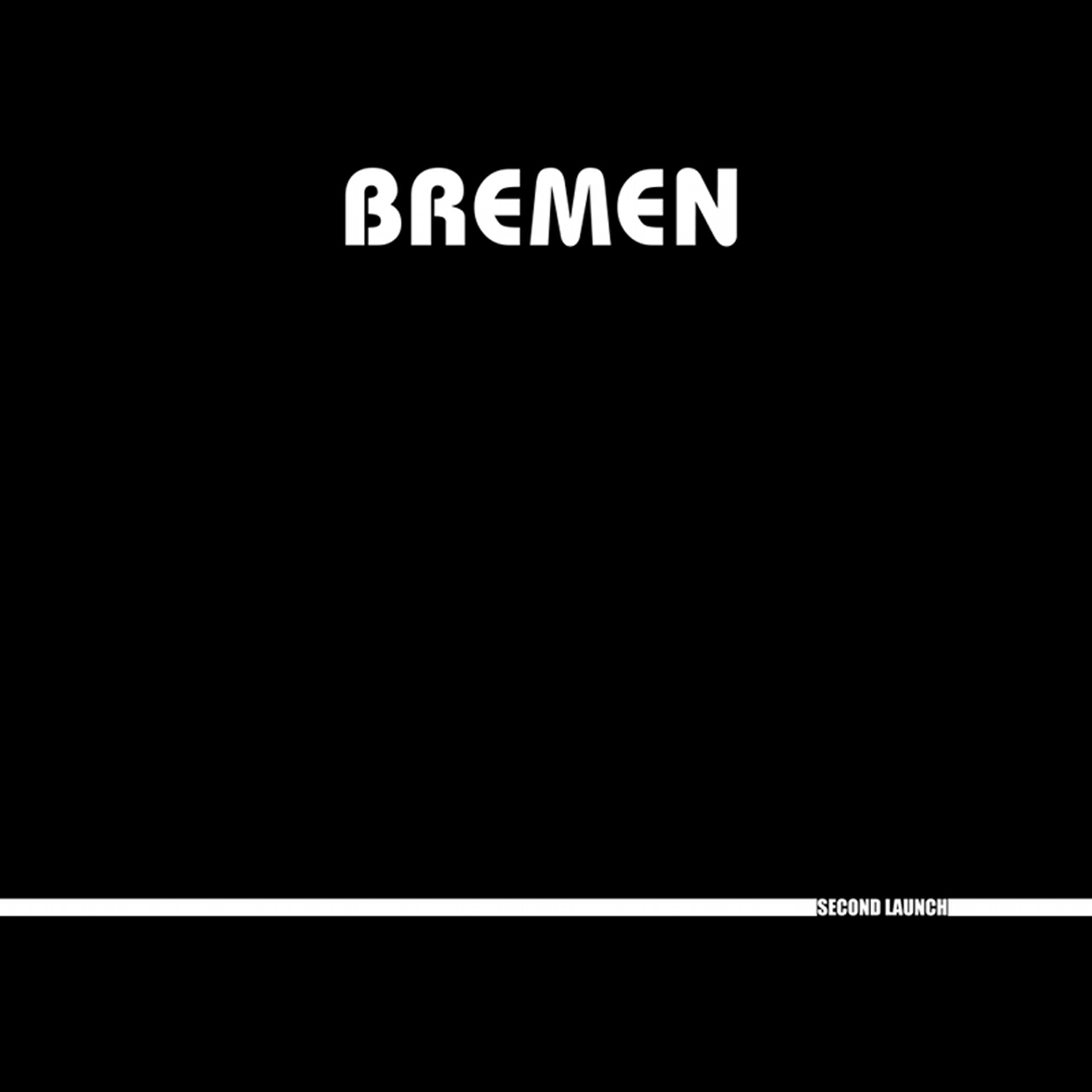 This sprawling double-album is the second release from this Swedish guitar/organ space-rock duo and it absolutely floored me. Built primarily from improvisations, Bremen largely avoids most of the jamminess, heavy-handedness, and self-indulgence that normally make me want to avoid the genre.  At their worst, they offer up a pleasantly languorous and simmering strain of post-rock, but the handful of highlights on Second Launch are nuanced, haunting, slow-burning perfection. The best moments are easily some of the finest music that I have heard this year even though the complete album perhaps errs a bit on the sleepy and too-long side.
This sprawling double-album is the second release from this Swedish guitar/organ space-rock duo and it absolutely floored me. Built primarily from improvisations, Bremen largely avoids most of the jamminess, heavy-handedness, and self-indulgence that normally make me want to avoid the genre.  At their worst, they offer up a pleasantly languorous and simmering strain of post-rock, but the handful of highlights on Second Launch are nuanced, haunting, slow-burning perfection. The best moments are easily some of the finest music that I have heard this year even though the complete album perhaps errs a bit on the sleepy and too-long side.
The most immediately distinctive and striking aspect about this duo of organist Jonas Tijander and guitarist Lanchy Orre (both from Brainbombs) is that they are only a duo, which makes for an unusually sparse and drum-less aesthetic that suits their droning and dark psychedelia beautifully. Actually, it is not quite immediately striking, as the epic opener "Entering Phase Two" deceptively replicates a full band in total flange-heavy, Hawkwind-style space rock glory, a feat that is later repeated with significant variation on the Neu!-worship of "Sweepers."  While both of those pieces are surprisingly enjoyable and assured pastiches, Bremen are much more compelling when they sound like only themselves, which is generally a mingling of flanging, phase-shifting organ drones and dark swells of atmospheric guitar.  Apparently, Nico was a significant influence, which makes sense: Second Launch's brooding instrumentals are certainly spiritual kin to her bleaker, harmonium-based albums. While that may not sound especially novel, the magic is in the details and the execution and Lanchy and Jonas clearly spent a lot of time overdubbing and editing their improvisations into dynamic and satisfying compositions.
The first hint that Bremen is onto something special comes with the second song, the 11-minute "Hollow Wave."  Built primarily from a warmly reverberating two-chord organ motif, the piece gradually blossoms into something mesmerizingly beautiful as the organ is joined by melancholy washes of shimmering guitar and stuttering piano twinkle. To their credit, Bremen avoid the expected trajectory of escalating density and instead maintain a simmering tension through a constantly shifting ebb and flow.  I also appreciate Tijander’s brief, yet restrained flurry of dissonant, chromatic piano cascades, which is something that seems to be outside the accepted palette for this style of music.
Happily, "Hollow Wave" was not a mere fluke, as the duo manage to rack up another three triumphs before Second Launch eventually winds to a close.  On "They Were Drifting," Orre delivers a smoldering and mournful haze of guitar sizzle over a chopped-up and panning synth bed and an insistent tom thump.  "Pace of Time" is similarly guitar-centric, as Orre unspools a woozy, tremolo-swooping almost-melody over a slowly chugging chord progression and an omnipresent organ hum. "Pace" is then followed by the album's probable highlight, the 10-minute "Walking the Skies," which marries Tijander’s dreamily repeating two-chord organ theme with warbling, mournful guitar that sounds a hell of a lot like a whale song.  Those two things go remarkably well together (and whales are inherently much cooler than guitars).
That said, Second Launch admittedly has a few significant faults, as it is a bit exhausting and uneven as a whole.  Also, a few songs are a bit toothless ("Threshold Crossing") or overstay their welcome (the 15-minute "Static Interferences").  On balance, however, most of the album is quite strong and an industrious listener like myself can easily create an album-length edit of the best pieces, as a lot of bloat can be chopped from a two-hour album.  Of course, songs that seem needlessly long to me might seem delightfully absorbing to someone else—there are certainly a couple of songs that I could listen to in an endless loop for hours.  It all depends on the strength of the central motif and what Bremen do with it, I guess.  I appreciate that they are confident enough to gamble with my attention span and would not want them to change their approach at all.  While I cannot quite give Second Launch an unreserved recommendation, I can definitely say that it blindsided me, as I had not heard of Bremen a month ago and now I am listening to them constantly.
 
 
Read More
- Administrator
- Albums and Singles
 I am fairly certain that this triple album is a lock for the most aptly named release of the year, as it is both unrelentingly melancholy and seemingly infinite (it clocks in at over two hours).  It is also excellent, as Dunn is one of the most reliably great ambient/minimalist drone artists.  While there is admittedly a somewhat exasperating interchangeability to these 19 songs, the sameness and epic length of The Infinite Sadness mostly work in Dunn's favor, as being sucked into an endless, dreamy loop can be quite a pleasant and mesmerizing experience in its own right.
I am fairly certain that this triple album is a lock for the most aptly named release of the year, as it is both unrelentingly melancholy and seemingly infinite (it clocks in at over two hours).  It is also excellent, as Dunn is one of the most reliably great ambient/minimalist drone artists.  While there is admittedly a somewhat exasperating interchangeability to these 19 songs, the sameness and epic length of The Infinite Sadness mostly work in Dunn's favor, as being sucked into an endless, dreamy loop can be quite a pleasant and mesmerizing experience in its own right.
For a triple-album, Kyle Bobby Dunn and the Infinite Sadness is remarkably easy to summarize, as it truly is a prolonged variation on a very simple and constrained motif: billowing, gently undulating swells of blurred quasi-orchestral sounds.  The closest kindred spirit is unquestionably Stars of the Lid, as the two artists share both a pastoral bent and a palette of primarily string- and brass-like textures.  In some important ways, however, Dunn has chosen a different path, opting for floating bittersweet reveries rather than compositions with overtly apparent arcs.  Dunn's songs certainly shift and evolve in their own way, but in more of a smoke- or cloud-like drift than in a clear path towards a destination.
As with most art, the beauty of Dunn's work lies in the execution, as these pieces tend to unfold in a way that feels like something organic and alive, yet also vaguely unreal and hallucinatory.  Kyle is also a genius at subtlety, a trait that is perhaps best embodied in the album's centerpiece "Rue de Guy-Mathieu," as Dunn's two melodic threads seamlessly interweave to create fleeting complex harmonies and dissonances.  That piece also features the buried hiss of cars driving along rainy streets, adding a welcome sense of place and mystery to an already blearily evocative atmosphere.  "Rue de Guy-Mathieu" also highlights another notable aspect of Dunn's work: this album is best experienced LOUD, as that is the ideal way to become fully absorbed and appreciate Kyle's many small-scale intricacies.
While I certainly prefer the pieces with darker, more complicated moods like "Rue de Guy-Mathieu" and "Saison Triste on Lac of Baies," there truly is not a weak piece in the bunch and Infinite Sadness is a certainly strong candidate for Dunn's best album.  I do have some issues with it, however, even if they are highly subjective.  For one, Dunn is a bit too pastoral and texturally monochromatic for me to fully embrace–I prefer some buried sharp edges in my drone.  Secondly, Dunn seems like a darkly funny and complicated guy, as this album is apparently the fruit of a long period of "reflecting heavily on the gorgeous feet of a certain French woman and binging on strong beers and cheese."  While the lengthy, semi-narrative song titles certainly allude to restlessness, romantic despair, black humor, and (of course) foot fetishism, very little of that comes through in the actual music and I wish it did (though I suppose a triple LP epic of melancholy drone is itself a monument to obsessiveness and long hours spent alone).  In any case, Kyle set out to make the album that he wanted to make, not the album that I wanted him to make, so my minor kvetching is completely my own: with Kyle Bobby Dunn and the Infinite Sadness, Dunn has crafted a near-flawless tour de force of Kyle Bobby Dunn music.
 
 
Read More
- Administrator
- Albums and Singles
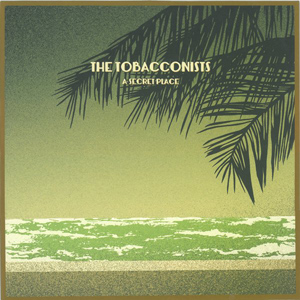 On their second LP, the duo of Scott Foust (Idea Fire Company) and Frans de Waard (Kapotte Muziek) chose to integrate more traditional instrumentation into their distinctive sound, namely bass guitar, overt synthesizer, and idiosyncratic rhythms. This was in a conscious attempt to pay tribute to one of both artists' favorite projects, Dome. While none of these six pieces sound directly like Graham Lewis & Bruce Gilbert's legendary project, that influence of bent post-industrial and playful absurdity resonates brilliantly throughout.
On their second LP, the duo of Scott Foust (Idea Fire Company) and Frans de Waard (Kapotte Muziek) chose to integrate more traditional instrumentation into their distinctive sound, namely bass guitar, overt synthesizer, and idiosyncratic rhythms. This was in a conscious attempt to pay tribute to one of both artists' favorite projects, Dome. While none of these six pieces sound directly like Graham Lewis & Bruce Gilbert's legendary project, that influence of bent post-industrial and playful absurdity resonates brilliantly throughout.
Right from the wobbly spring reverb and microscopic clicks that open "Race for Space," the influence of Dome is obvious.Squeaky, squealing bits of noise and what sounds like the hiss of a slowly deflating tire result in an odd, but captivating juxtaposition of noises in a memorable, almost catchy combination.Massive percussive thuds and gurgling textures mingle with white noise on "Pillow Talk," mixed up with fragments of voices also skirts that line nicely between rhythm and noise.
That booming bass guitar on "Out Nights" offsets the sloshing of water and chirpy electronics result in a more abstract combination, and more than a bit dissonant with the heavy emphasis on a low end that nicely vibrates anything nearby.Things get even more industrial with the duo on "Heavy Water Experiments," mixing more hollow bass rattles with surges of feedback and electronics.Tied to a rhythmic, structured loop, odd random sounds mix with synthetic and junk noises into a harsher, grinding electronic vibe.It might be a little repetitive, but the overall power of the song overshadows that significantly.
The most bizarre piece would be "A Secret Place," which opens with a bit of clear levity with its bouncy, lighthearted plucked jazz bass introduction.The bass stays with a lighter ambient atmosphere, but dark low end drones appear, as do melodies seemingly rising from the bottom of the ocean.It might be the most melodic and musical piece here, but it is heavily steeped in sub-aquatic pressure and dissonance.
On the other hand, the sprawling "An Tone Four Giver" goes in the opposite direction via field recordings and dramatic crashes to emphasize experimentation over instrumentation.Churning noise, slamming doors and echoing voices result in a piece that remains dissonant through out.Obvious synth passages and bass guitar creep in amidst the noise and helicopter noises to bring some semblance of convention before stripping down to an expanse of static and radio interference.
The influence of Dome is obvious throughout A Secret Place, but I could never mistake any of these compositions as being one of Lewis' or Gilbert's.Foust and de Waard never try to overtly copy them, but instead work with a similar palette of synths and loose structures.Plus, they manage to conjure the same industrial rhythms and Dadaist playfulness to result in a project that manages to be challenging, but also enjoyable, a feat few artists other than Dome manage to do so successfully.
samples:
 
Read More

